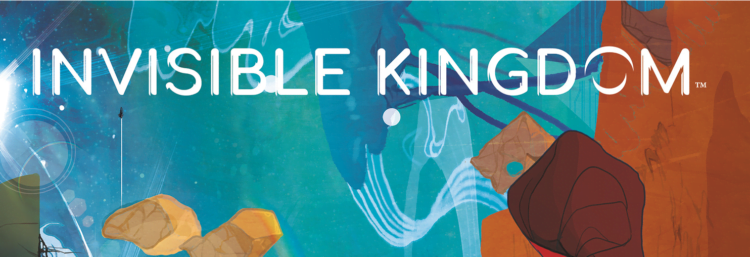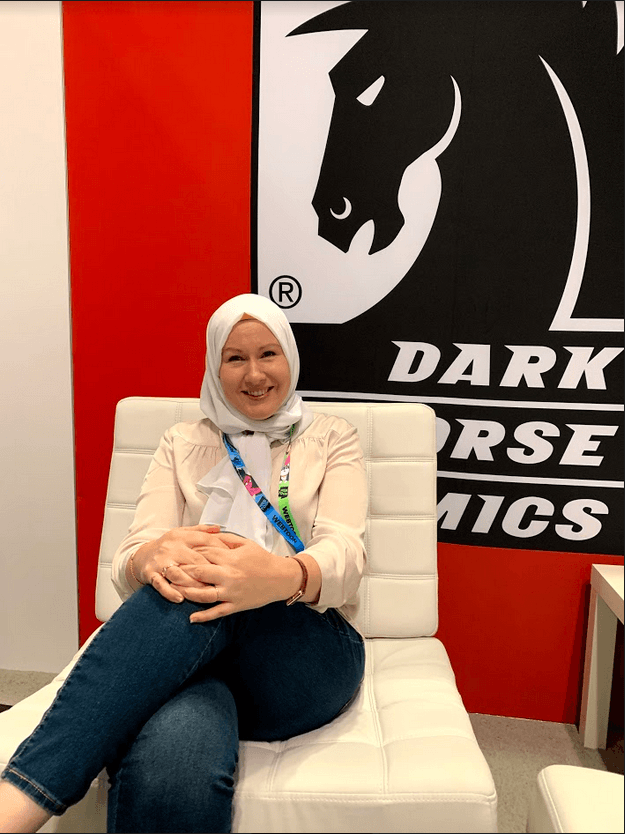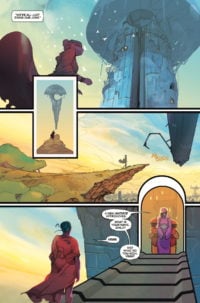

Let’s start off with some background on ‘Invisible Kingdom’. How did it the book come together?
‘Invisible Kingdom’ came about primarily because I’ve always wanted to do a space opera and I had been looking for a reason to work with Karen Berger again for many years. So when those two opportunities collided, I thought “Okay, great. Let’s do something interesting, fun, fresh, that takes a lot of classic sci-fi tropes and kind of twists them up a little bit to hopefully get something new and funny and interesting.” So I knew I wanted to do a story about space nuns [laughs] and I also had an idea about telling a story about a large interplanetary corporation that delivers consumer goods across three or four different planets, that may or may not have anything in common with a certain large distributor of consumer goods that will ship to you in two days or less [laughs] that we won’t name because we don’t want to get sued. So it seemed like a really cool opportunity to tell both of those stories together and show how religion and capitalism and all of these different elements that should be fairly familiar to us here on twenty-first century Earth could come together in a space opera setting.
How did Christian Ward get involved? He’s done some beautiful work on the book so far.
Yeah! I feel very lucky to be able to work with Christian. I’d been admiring his work since he’d done ‘Black Bolt’ with Saladin Ahmad, which of course is up for an Eisner. I just thought his style was so unique, so unlike anything else that we see right now, and his world building is just fantastic. So I approached him – Karen asked him as well if he’d be interested – and I remember Skyping with him – he lives in London and I live in Seattle – and just really pitching him like he was the editor and I was trying to convince him of the worthiness of this project because I was so eager to have him on board and he was trying to figure out what the next few years of his life would look like creatively. “Please, please pick me!” So I was very happy that we were able to woo him onto this project, and I have to say, I don’t know that I’ve ever worked more closely with an artist to build out a world. A lot of the more interesting, visually distinctive elements of the story come from him, particularly the architecture. So it’s been a really fun collaboration.
 The only thing I can think of that comes close, stylistically, is maybe what Fiona Staples is doing over on ‘Saga’. And even that doesn’t really do it justice.
The only thing I can think of that comes close, stylistically, is maybe what Fiona Staples is doing over on ‘Saga’. And even that doesn’t really do it justice.
Yeah! I think there are certain similarities. What I really love about comics right now is that there are so many distinct visual voices. There are so many styles that you don’t really see replicated from one book to another or one artist to another. You really don’t have trouble differentiating who’s who and whose work is whose. And I love that. There’s no uniformity. Every book has a very different feel, and I feel like Christian’s work was particularly appropriate to this story, because he really does have such a wonderful, playful visual style.
Oh, for sure. I’ve actually changed things in scripts to reflect what Christian was doing in terms of the art. I remember in particular there was a cover that hasn’t come out yet, so I won’t tell you exactly what’s in it. Originally we had planned something that was good but very run of the mill. But when I saw what he was doing with the interiors of these spaceships that we’ve been on, I was like, “You know what, I think we can go bigger with this cover.” So just because of his strengths I’ve sort of expanded what I’ve been doing on the page because I know that he can get there as an artist and do the big cityscapes and huge splash pages. And so I’ve been putting in more of those splash pages so that he has more room to play.
It’s clear that a lot of thought went into the world and the religious aspects in particular. Is there much in the way of real world influence there? How much of it was invented from whole cloth?
You know, it’s always difficult to say what is subconsciously influencing you in any one work. But I think particularly with the religious sects that we show in the book, we tried to stay away from distinct parallels with any particular Earth religions. That’s where Christian’s architecture comes in. We were discussing ways to make the religious architecture of this world visually distinct and to do that we wanted to stay away from what we typically see on Earth, which is big pointy buildings, church spires, minarets. And so what Christian did was make wonderful use of negative space. He’s got round structures with empty, circular courtyards and cutouts. So they really don’t resemble anything on Earth. And they float, which was also Christian’s idea. It was like “What if this isn’t even something stuck to the ground, what if these buildings floated in the air?” Perfect, go with it!
